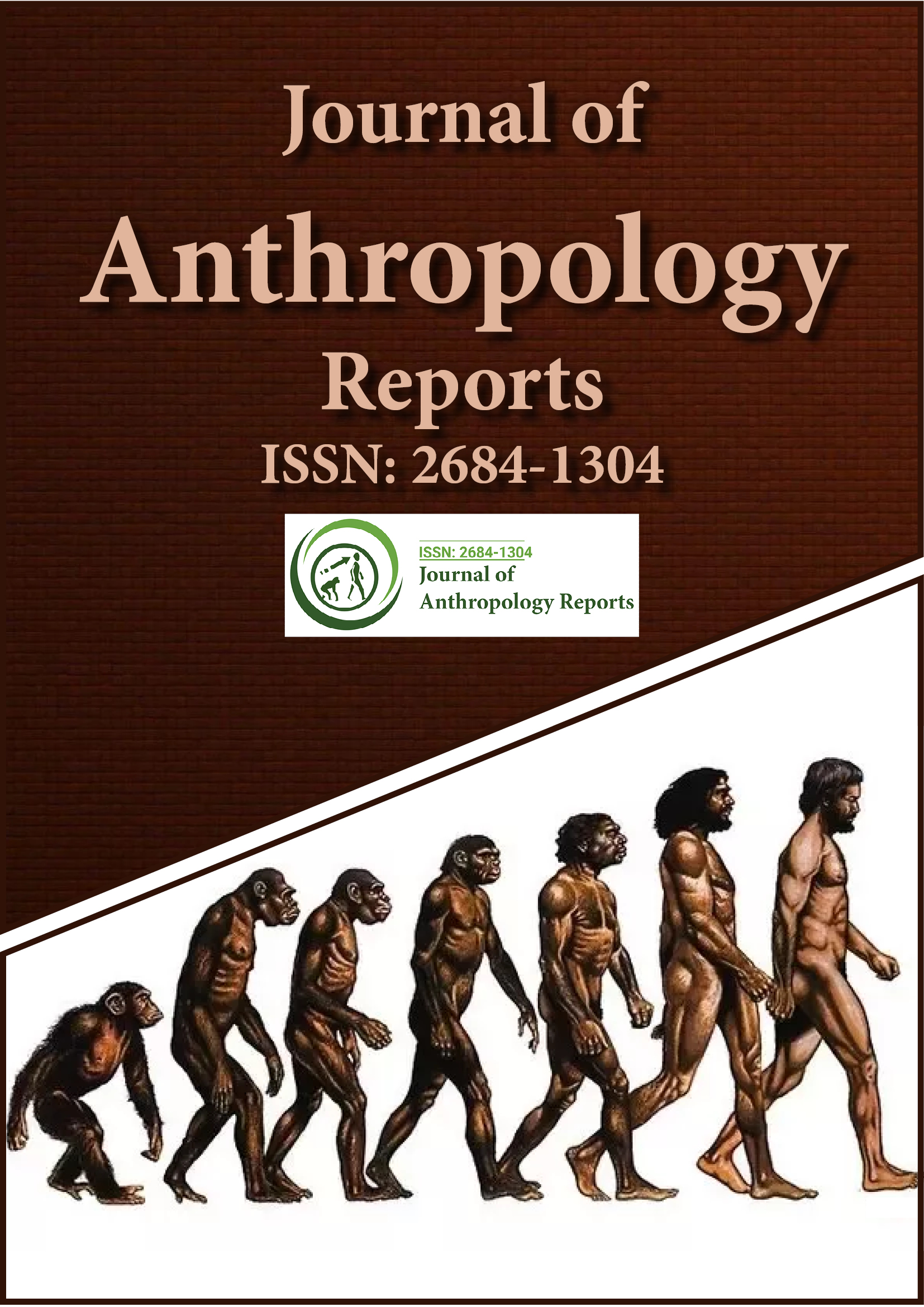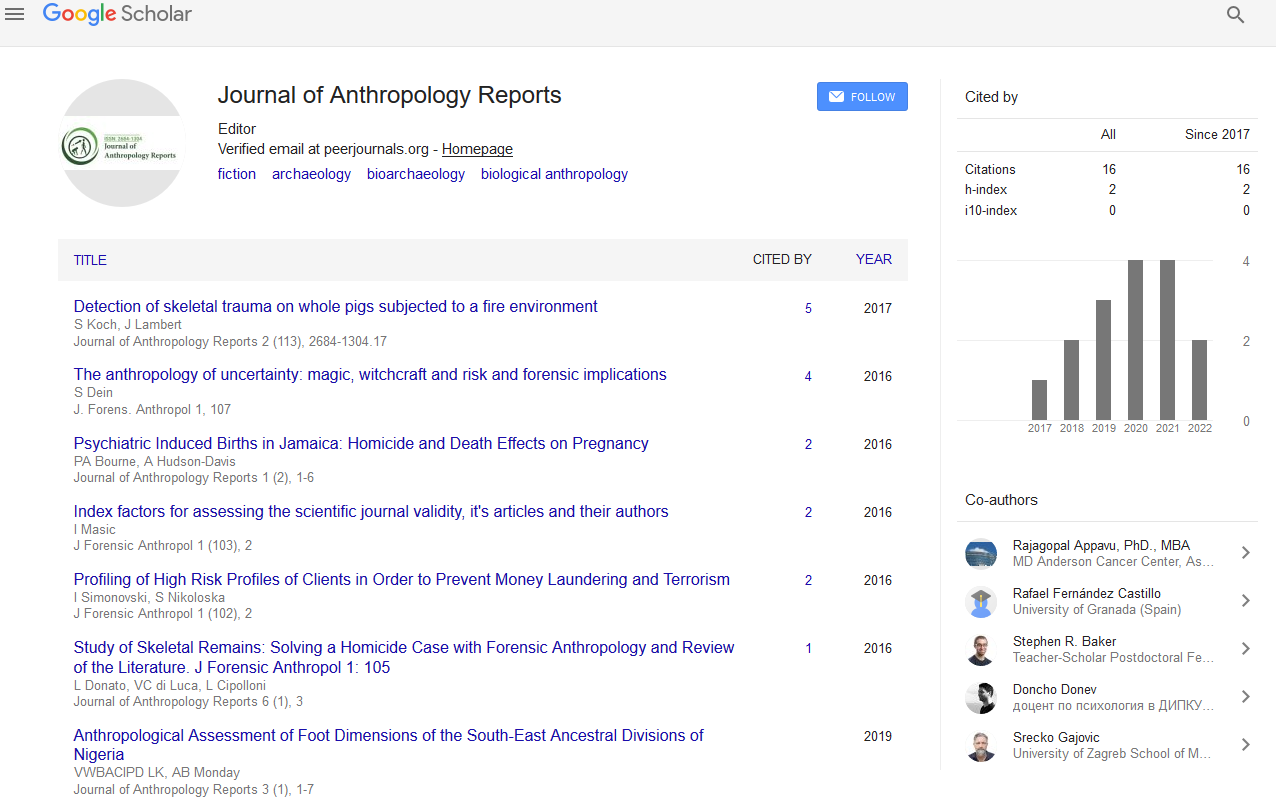Indexed In
- RefSeek
- Hamdard University
- EBSCO A-Z
Useful Links
Share This Page
Journal Flyer

Open Access Journals
- Agri and Aquaculture
- Biochemistry
- Bioinformatics & Systems Biology
- Business & Management
- Chemistry
- Clinical Sciences
- Engineering
- Food & Nutrition
- General Science
- Genetics & Molecular Biology
- Immunology & Microbiology
- Medical Sciences
- Neuroscience & Psychology
- Nursing & Health Care
- Pharmaceutical Sciences
Commentary - (2023) Volume 6, Issue 1
Importance of Bioinformatics in Evolutionary Anthropology
Kazuhiko Imaizumi*Received: 02-Feb-2023, Manuscript No. JFA-23-19683; Editor assigned: 06-Feb-2023, Pre QC No. JFA-23-19683 (PQ); Reviewed: 21-Feb-2023, QC No. JFA-23-19683 (QC); Revised: 28-Feb-2023, Manuscript No. JFA-23-19683 (R); Published: 08-Mar-2023, DOI: 10.35248/2684-1304.23.6.149
Description
Bioinformatics is defined as mathematical, statistical, and computational methods aimed at solving various biological problems using DNA, amino acid sequences, and other related biological information. The field of bioinformatics inherently relies on computational techniques to store, retrieve, analyze and actually predict the composition and structure of biomolecules such as nucleic acids (genetic material).
The advent of bioinformatics methods was essential to the completion of the Human Genome Project (HGP), with many scientists referring to our life in the 'post-genome' era. This technology and knowledge will undoubtedly influence many areas of research and their learning processes. For example, now that the entire genome is complete and available, we can better study the differences and similarities between genes in different species. The information gleaned from this kind of study helps us draw conclusions about evolution. This new field of science is known as 'comparative genomics'.
Apart from the significant contribution bioinformatics made to the human genome project, it will ultimately have a major impact on fields such as anthropology, biological research, drug development and clinical medicine. Of course, improvements in computing technology and hardware also contribute to the use and further development of bioinformatics.
Evolutionary anthropologist mark stoneking writes about the various outcomes of the genome project that are useful to molecular anthropologists:
1. Mitochondrial DNA sequencing helped us find the most recent origin of the human mtDNA ancestor, and we then used that information to analyze human mtDNA variation and evolution.
2. The Human Genome Project will enable molecular anthropological studies to study evolutionarily important regions of the genome.
3. Knowledge of disease polymorphisms will be facilitated by the Human Genome Project. 4. The development of new techniques will help link genetic variation to morphological variation.
4. Comparative genome sequencing of non-human primates to identify genes involved in morphological differences between humans and non-human primates.
Highlight of the human genome project
• The Human Genome Project has been one of the most farreaching achievements in the quest to understand human biology. The project was successfully completed in April 2003.
• This project aimed to map the human genome and annotate the functions of individual gene functions. This project has revealed that there are 20,500 human genes and their locations.
• Techniques developed in the project were used to sequence the genomes of other organisms.
• Underestimation of human diversity in HGP led to the Human Genome Diversity Project (HGDP), which recruited 52 populations from around the world and is now part of the HGDP-CEPH (Centre d'Etudes du polymorphisme Humain) Panel.
• They used HGDP data and samples to account for the impact of climate, ecological factors, and cultural practices at the population level, study population structure, and reconstruct population histories.
• The International Hap Map Consortium (IHMC) performed SNP genotyping and deep sequencing of selected genomic regions in a subset of samples to generate tagging SNPs in haplotype blocks across the human genome.
• Geographical projects aimed to elucidate the migration history of modern humans after their origin and spread from Africa by examining genetic patterns of mitochondrial and Ychromosomal DNA diversity.
• The 1000 Genomes project has sequenced for the first time 95% of complete human genome samples collected from European, East Asian, South Asian, and West African and American ancestry.
• The samples collected in the Genome Project, the data generated, and the techniques developed in the Genome Project continue to be used by anthropologists to study the genetic basis of population structure.
Citation: Imaizumi K (2023) Importance of Bioinformatics in Evolutionary Anthropology. J Anthropol Rep. 6:149.
Copyright: © 2023 Imaizumi K. This is an open-access article distributed under the terms of the Creative Commons Attribution License, which permits unrestricted use, distribution, and reproduction in any medium, provided the original author and source are credited.

